Karma supercar takes on the Goodwood Hill
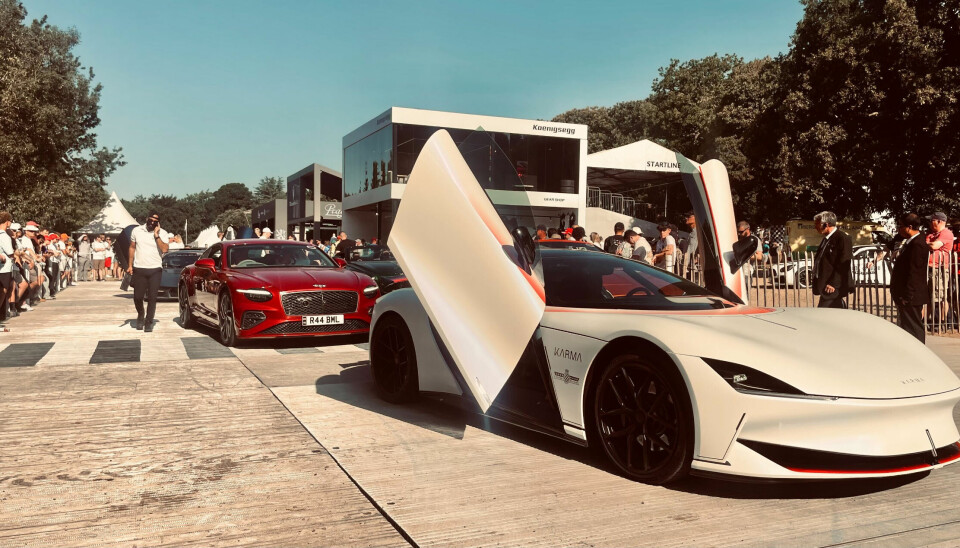
Nicholas David on Karma’s vision for the Kaveya
At Goodwood 2025, Karma Automotive’s Design VP, Nicholas David, revealed how the forthcoming Kaveya aims to rewrite the rulebook for electric performance vehicles — from proportion-driven aesthetics to theatrical lighting and hidden mechanism
Amid the roar of engines and heritage of Goodwood, Karma Automotive showed something quietly radical — the Kaveya.
Nicholas David, VP of design, spoke exclusively to CDN about how Karma’s design studio is reimagining electric performance from the ground up. Gone are the familiar clichés of supercar styling. In their place: seamless surfaces and a signature “Comet Line” silhouette. With lighting taking over the role once held by grilles, and hidden features adding emotional theatre, the Kaveya marks a bold new direction for a marque that has been knocking on the door for a few years now. CDN caught up with David as he stepped out of the cockpit of the Kaveya following an adrenaline-pumping hillclimb.
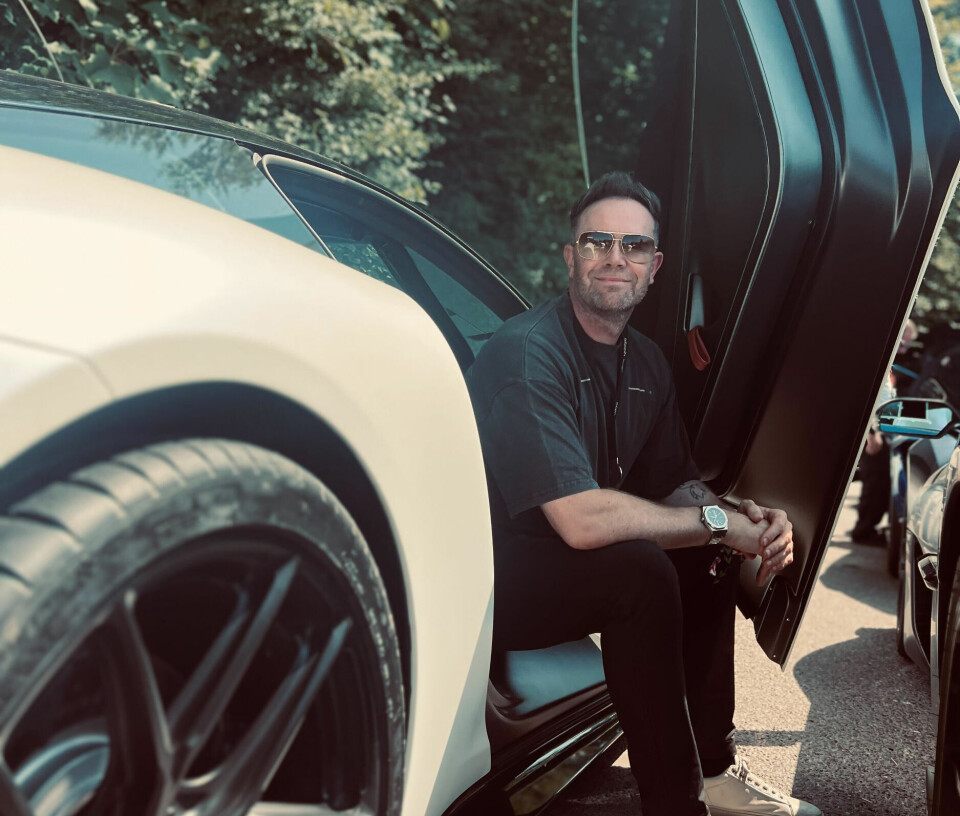
Nicholas David: Yeah, I’m kind of buzzing... I grew up in the UK and have been coming to Goodwood for many years, so it’s really nice to be here with a car that I’ve seen from the sketch all the way through to the development stage and now going up the hill. It’s a real bucket-list moment.
CDN: And tell us about that initial sketch. How close is the car we’re looking at to that first idea? How has it evolved?
ND: When you're designing a supercar with a long hood, you have to be really careful. There are so many brands, especially British ones, with long-hooded GT cars. And in America, there are also long-hooded cars, it’s easy to be compared to those. In our studio, we have something called the “F-no list.”
It’s a list of design attributes that are considered clichés, things designers fall back on, not necessarily out of laziness, but because they’re tried and tested. Any attribute that’s common between supercars, hypercars, or sports cars, if it’s on the list, it’s a “no.”
That list became iconic inside the brand. We wanted to ensure our car felt completely new, that people wouldn’t look at it and say, “That looks like a bit of this car, and a bit of that one.” That’s been a big win for us. So the idea was to come up with a design language that was uniquely ours.
That’s where the "Comet Line" came from. It starts at one fender, highlighted today in red, travels around the cabin, and ends at the other fender. All the surfaces are draped from that master line. It’s not line-based, it’s surface-based. And that’s quite rare with today’s design techniques. We also minimised part lines, the charge port is hidden under the spoiler, and we use a giant clamshell hood to clean up the surfaces as much as possible.
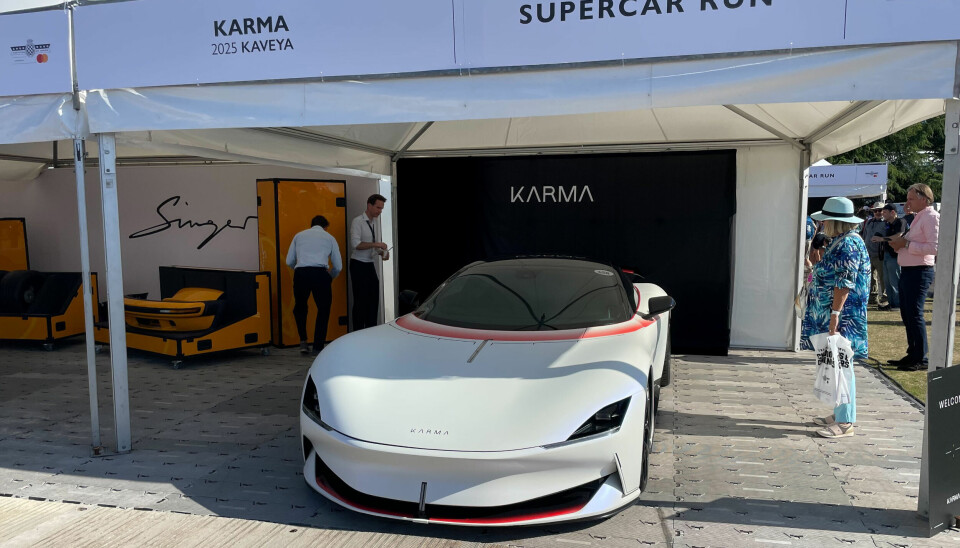
CDN: The surfacing is super clean, almost organic forms.
ND: I think there’s a trend in design where some try to make things weird, funky, or even ugly just to make them look new. We’ve taken a different approach, let the proportion do the talking. It doesn’t have to be busy to look modern. And since we no longer have a visceral V10 or V12 engine, we asked, how else can we build emotion into the car?
A lot of elements are hidden. For example, you swipe the pillar to open the doors. The cowl area slides forward to expose the windshield wipers, which then ‘butterfly’ open. When you're done, it slides back to hide them again. The headlamps have trap doors that slide back, a nod to pop-up headlamps, but done in a more homologated way. The rear wing also retracts completely into the body. It’s all about adding a sense of theatre.
Inside, it’s simple forms. The screens appear intuitively when needed, or you can set them to appear as you prefer. For everyday driving, it’s very clean and minimal. But it can be more dynamic when you want it to be. We've stayed away from giant screens, some only appear when needed.
CDN: And why was that important for you?
ND: Two reasons. First, it creates a very unique interior experience. Second, because we’re entering a market already full of luxury, leather and craftsmanship, we asked, what’s our version of luxury? For us, it’s in the mechanisms, the hidden features, the ultra-smooth transitions. All window seals are removed. All the peripheral clutter is gone. It’s the cleanest and simplest form.
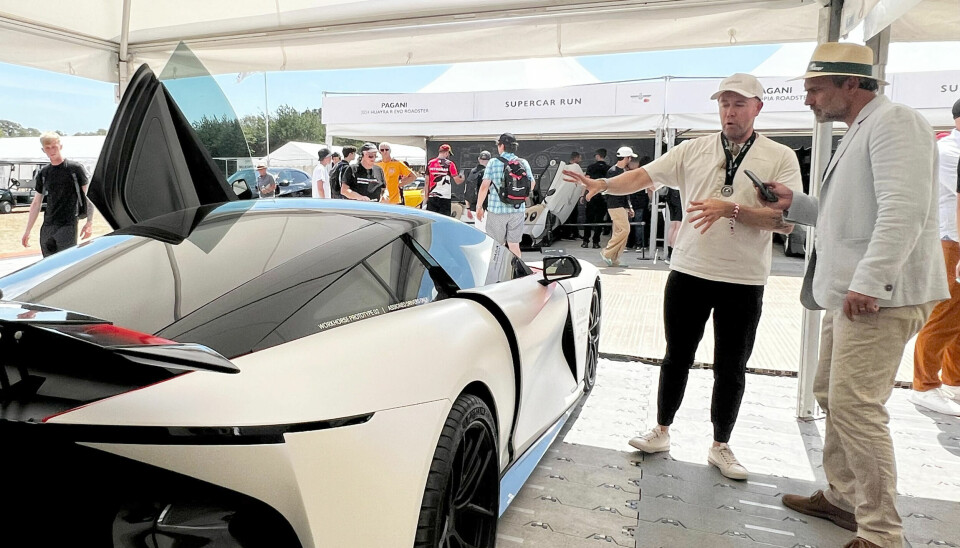
CDN: And let’s talk about the proportions. We know the usual signifiers, long bonnet, cab-rear layout, that say “premium” or “GT,” but you’re doing something different here.
ND: Good observation. Underneath, this car uses our aluminium structure. It’s designed to be flexible, but the dash-to-axle ratio is somewhat fixed. We used that to our advantage. From the rear three-quarter angle, it looks like a long dash-to-axle setup. But from the side, it becomes more cab-forward.
And then there’s the windshield. It’s nearly round, probably the maximum curvature before you get double reflections. We worked with different glass suppliers to make sure it wouldn’t refract badly. You’ve got about a foot and a half from the base of the windshield to the A-pillar, which gives it a really unique flavour. That worked well with the Comet Line too.
You’ll see that line continue in our upcoming models, Amaris and Ivara, which we’ll reveal at Pebble Beach.
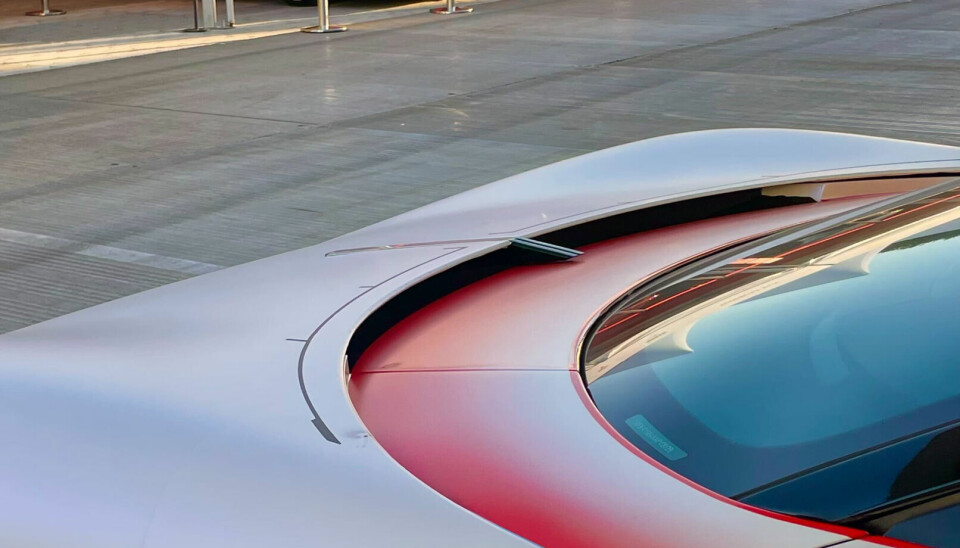
CDN: If you get that right, it sets the foundation for everything else.
ND: Exactly. That said, it was tricky. There were some early design challenges. We’ve structured the body side differently than a traditional car. Instead of a classic Coke-bottle shape, we push the fender line out to the widest point and have the body taper inward. It’s a more modern surfacing approach.
CDN: So the plan view would look really interesting. No classic hourglass shape, but something else entirely.
ND: Yes, it’s literally a “comet” shape, shooting from the rear fenders toward the front. The surface flanks sit over that arc, and it gives the impression of a wake coming off the cowl area. You’ll see that in the Ivara and Amaris as well.
CDN: How did you integrate aerodynamics into your design language?
ND: We’ve got about five or six prototypes running around doing different tests: battery, brake, and aerodynamic testing at Willow Springs and Laguna Seca. This particular car has done a lot of track time. Everything you see has been homologated for production, but we’re still dialing in the aero.
We’ve integrated aerodynamic benefits through the design, like the hidden cowl and the clean surfaces. We also have classic aerodynamic features like the pass-through ahead of and behind the front wheels, and venting behind the rear wheels to relieve pressure.
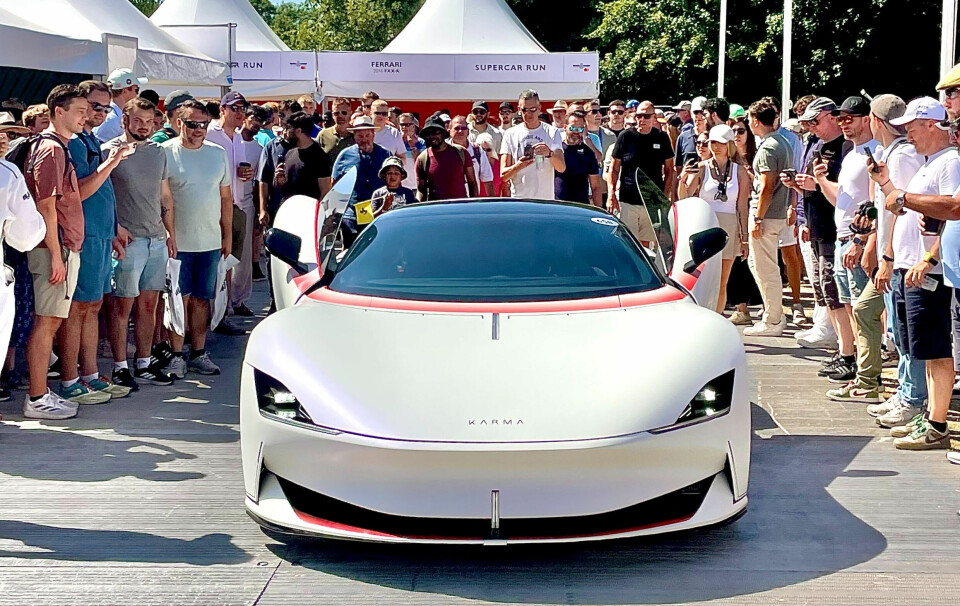
CDN: That detail must really help.
ND: Absolutely. And all our current vehicles have piano black rear sections. We’re trying to create a strong “down-the-road” graphic. Since EVs no longer have prominent grilles, you lose some of the identity. So we’ve introduced a unique lighting signature.
There are two horizontal lights on either side, a vertical on the rear, and a vertical CHMSL (Center High-Mounted Stop Lamp). When you brake, it forms a crosshair. Up front, there’s a light on the hood and another in the lower fascia, again, a crosshair effect. You don’t notice it at first, but when you're following the car, it becomes really striking.
CDN: Lighting seems to be an obvious way to create identity in the absence of grilles. How central is it to Karma’s brand identity?
ND: Lights are the car’s eyes, they give the car a certain expression. Whether it’s aggressive, calm, or playful, lighting sets the tone. We wanted a strong, recognisable lighting graphic. Something you see down the road and instantly know, that’s Karma.
I think no one else is doing this approach, which is why we’re leaning into it. You’ll see the full production version at The Quail. The headlamp “trap doors” also slide open and closed, that’s part of the theatre we’re building in.
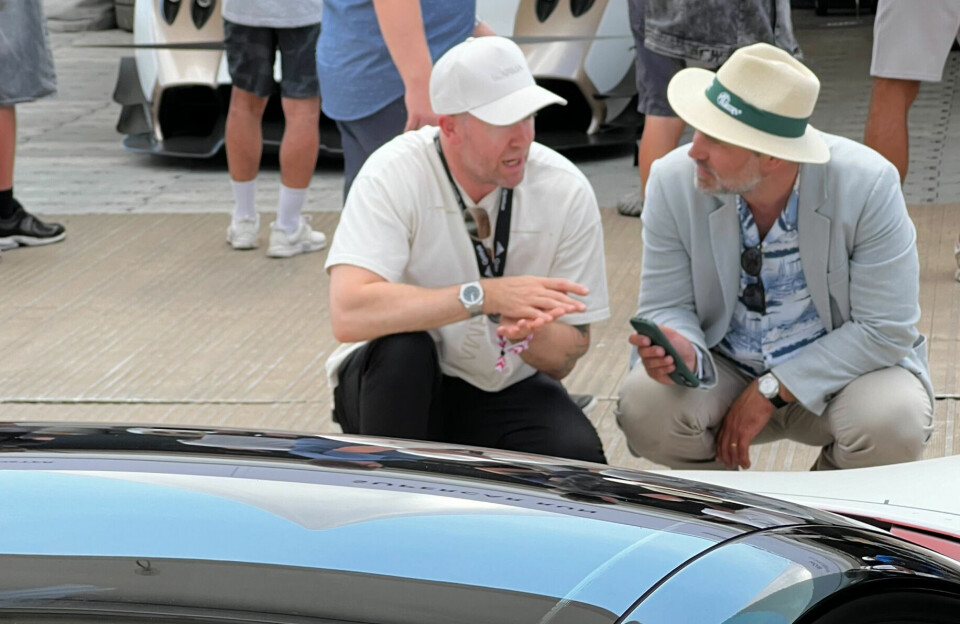
CDN: That must have been an engineering challenge given the requirements?
ND: Exactly. Engineering had to consider whether the mechanisms could work quickly and reliably, say, when you drive into a tunnel. But customers are already putting deposits down because of features like this. On the Ivara, we’re exploring a different mechanism, but still aiming for the same effect, giving the car character through lighting.
CDN: And are you working with external lighting suppliers?
ND: We have an internal lighting department for feasibility work. But we’re also closely engaged with about three or four suppliers we use regularly. They show us their latest technologies, and we try to incorporate them. We’re always looking for creative ways to meet or stretch regulations, for example, playing with polarisation and glow intensity, testing under different lighting conditions, and during charging.
CDN: So the end of 2027 is when we might start seeing these on the road?
ND: At The Quail and Pebble Beach, you’ll see the Gyesera. Production for that starts later this year. You’ll also see early models of that car on the road around October next year. At The Quail, we’ll show the full interior of the Amaris, up until now, we’ve only shown the exterior. And shortly after, you’ll see this car, the Kaveya.
CDN: Is this going to be the halo car?
ND: Let’s just say, it’ll be the halo car for a while. We have a solid plan in place.
CDN: I saw people stopping to take pictures, they seemed really into it.
ND: Definitely. And that’s the reaction we were hoping for.





